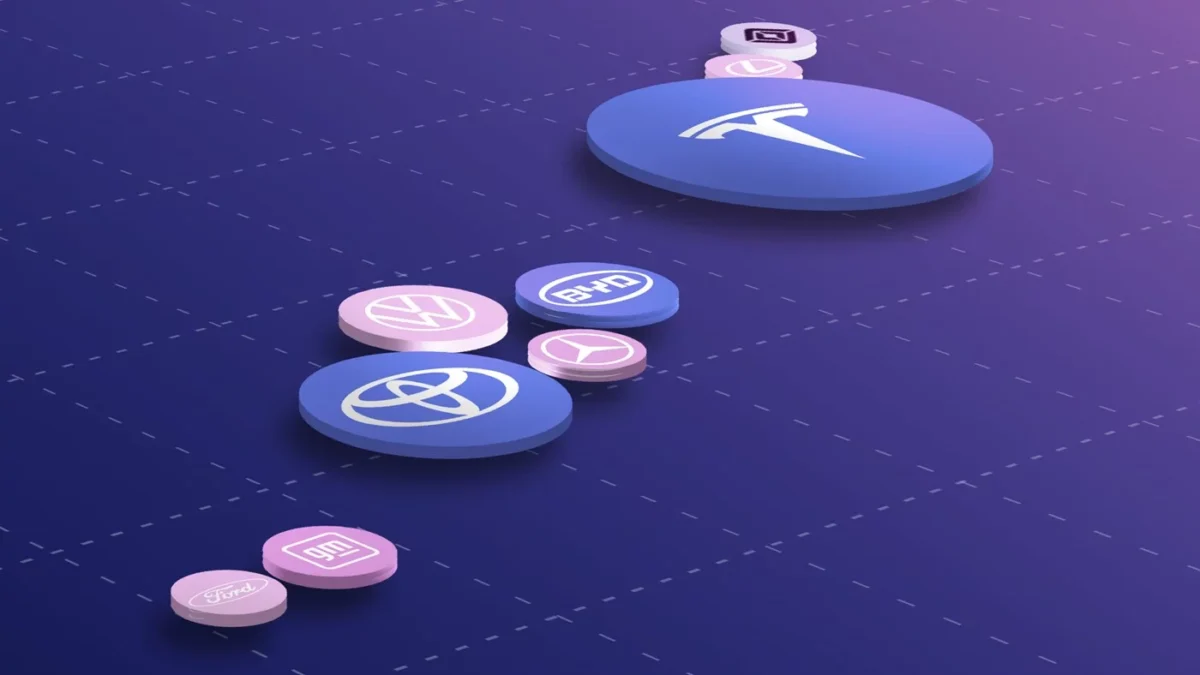
Natural Selection
Natural Selection is about survival and evolution. Evolution requires a change in traits in a way that increases the chances of the species’ survival. But some species are not able to evolve successfully. Those species become victims of natural selection. Free markets are similar to nature in this respect. Companies that cannot catch up with the changing demands of customers usually do not make it. Transformation is business evolution.
Autonomous vehicles are improving themselves every day by collecting more and more data, vehicles become more entertaining with advanced technologies, car ownership leaves its place to mobility as a service, and companies become more capable digitally and more electronically focused… These are causing the transformation into the Mobility Ecosystem and this change is supported by the shifting market demand for more sustainable alternatives.
Remaining a leader is a less likely scenario for most companies if they do not stay up to date with industry developments, in other words, if they cannot transform. Reasons behind such a failing may include not having the capital requirements for widespread change, especially for the companies that have not carried out research and development in this area (which is why we think the key players will survive) or being too slow to adapt to such a change. Decades of accumulation of technology and knowledge are giving a competitive edge to the current industry leaders. Yet, even they may not be able to survive and also become a victim of natural selection if they cannot solve the problems that come with being too big, such as being slow and rigid.
Winds of Change: The Age of Digitalization
Many mature industries are experiencing significant technological disruption. In the case of the automotive industry, this disruption is caused by self-driving cars that collect data and improve themselves, electric vehicles, and ecosystems within the vehicles that open up the whole operating system to third parties to write apps, mostly for navigation, communication, and entertainment. Even the importance of the concept of ownership is changing. App-based car rentals that allow their users to pay only for the used time are popular. So, the age of physical attributes like appearance, size, and horsepower is now behind us. This is the new age of digitalization.
This new age brings new leaders. Tesla is currently the 6th most valuable American company on the US Stock Market and currently has a market cap of $767 billion. The next closest automaker is Toyota, with a market cap of around $232 billion. So, currently, Tesla has 3.3 times the market cap of its closest rival, even though it can be considered a relatively new player by the standards of the automotive industry. What is the reason behind this? Is digital enabling a higher CAGR (Compound Annual Growth Rate)? Why is Tesla outperforming the rest of the industry?
Well-established, well-known companies with a strong track record are trying to transform and adapt. Meanwhile, they are being outperformed by Tesla, the most disruptive company in the industry. In the chart above, estimated CAGR in 10 years and estimated DMI scores of automotive leaders are given. Tesla, as a more technological alternative, will have a very strong position in the mobility ecosystem through the advantage of being one of the first movers. The alternatives such as Toyota, Mercedes, Volkswagen, BYD, GM, and Ford are expected to grow less due to their expected Digital Maturity Index scores. Yet, even though their market caps are not as big as Tesla’s, Lucid and Rivian are also expected to have higher CAGR due to being more digitally mature in comparison. All the digital leaders are born in the new world, and historical alternatives may be too big to adapt as fast as they do.
There will be more new entrants, even though the entry barriers are high. Especially in periods of transition as we are seeing right now, appetites tend to be larger than normal, since such times create lots of new opportunities. New entrants that are built in this new era will mostly be focused on data collection, digitalization, and sustainability initiatives.
The Digital Age is Green
Digitalization is a game changer, yet it is not the only trending topic. Factors such as Brexit, COVID-19, and climate change have affected consumer behaviour and change brings unpredictability along with it. Yet, it is quite clear that demand for more sustainable alternatives is increasing.
Sustainability has now become a requirement, and the end of the combustion engine is near. The policies of lawmakers are also changing alongside customer demand. For instance, The European Climate Law sets a target of reducing gas emissions by 55% compared to 1990s levels and sets a legally binding target of net zero greenhouse gas emissions by 2050. By implementing such policies, Europe is aiming to be the first carbon neutral continent and is even challenging all the others in this respect by saying if other continents can better Europe’s efforts, all of us are the winners. Another example is the UK announcing the end of the sale of new petrol and diesel vehicles in 2030. So, it is now time for all the research and development investments into sustainability to pay off.
Survival of the Fittest
It is a process of natural selection. The ones that are “fit” enough, i.e., the ones that can successfully evolve, are the ones that survive. The complex situation and the market changes create a wealth of opportunities for the fittest companies. In order to continue as market leaders, companies should first understand this change and position their situation within it by measuring. Then they should transform in a way that improves the whole mobility ecosystem. Anyone that can create an impact as a result will be able to take home all the spoils.

